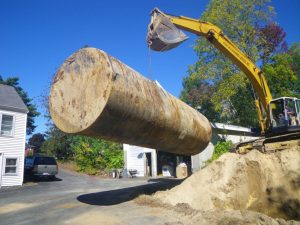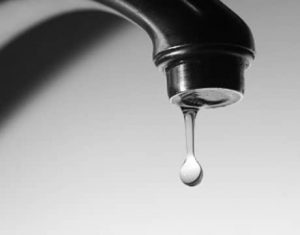Inspiring Young Women

On April 23, 2018, Tata & Howard hosted an Introduce a Girl to Engineering event. Thirty-four junior girl scouts (from grades 4-5) from five local troops attended our interactive and informative overview of environmental engineering.
Women engineers from the company were eager to welcome the scouts. They know from experience how important it is to inspire young girls and get them excited about a successful career in engineering. They also know the challenges women often face in the field of engineering long known to be male-dominated.
Slowly, however, this trend is beginning to change, as more young women are earning engineering degrees.
 Twenty-five years ago, when Tata & Howard was a newly established company, graduating classes from engineering schools may have been 1-2 percent women. As recently as 2016, about 20 percent of graduating engineers were female, and today, Tata & Howard stands out in the Water and Wastewater industry out as a 100% employee-owned company, led by two women co-president engineers, and 38 percent of its workforce being female engineers.
Twenty-five years ago, when Tata & Howard was a newly established company, graduating classes from engineering schools may have been 1-2 percent women. As recently as 2016, about 20 percent of graduating engineers were female, and today, Tata & Howard stands out in the Water and Wastewater industry out as a 100% employee-owned company, led by two women co-president engineers, and 38 percent of its workforce being female engineers.
These women engineers are the future role models and inspiration for young girls. On this night, they were excited to share their experiences with the girl scouts and tell them what it is like to be an environmental engineer in the water and wastewater industry.
Their excitement was unmistakable.
We presented a colorful slideshow illustrating how clean water is delivered to our homes—starting from groundwater or surface water sources and pumped through pipes to a water treatment facility. The water treatment process was shown with a simple water filtration demonstration, screening dirty water with both coarse rocks and a coffee filter. After going through a treatment process, it was explained that clean water is then stored in tanks and eventually ends up in the pipes that lead to our homes—and any place where we can turn on the tap and drink water.
The presentation was followed by questions, answers, and everyone’s favorite…pizza. The girls were then divided into seven teams and instructed to build a freestanding water tank using only a handful of ordinary items, such as a plastic cup (the tank), drinking straws, bubble gum, band aids, string, thumbtacks, string, paper clips, and toothpicks. The challenge lasted 30 minutes, after which, 8 ounces of water was poured into the water tank creations to test for structural integrity and left to stand for 30 seconds without spilling any liquid.
Girl Day Water Tank Instructions
Lots of excitement and fun ensued as the water towers wobbled, leaked and finally toppled into a watery mess! Not all the tanks collapsed however. A few withstood the water test challenge and a winning team emerged—the Llamacorns—who built a tower standing tall at 11 ¼”. The Greatest Kitty Cookie team came in a close second with a 9 ½” tall structure.
Before leaving for the evening, each scout was presented with a certificate and a merit badge. Many thanks to all the Tata & Howard women volunteers who helped make Introduce a Girl to Engineering a memorable and enjoyable event for these young girls.
And hopefully…the girls also left with a greater appreciation and enthusiasm about pursuing a career in engineering.
Team Results:
Double Bubble – 8 ¼” Collapsed
The River & the Sky – 16 ½” Collapsed
Beautifully Disgusting – 6 ½” Leaked
Llamacorns – 11 ¼” Winning team!
The Greatest Kitty Challenge – 9 ½” – Second Place
Royalty – 11 ½” Collapsed
Water Dogs – 4 ¾” Leaked

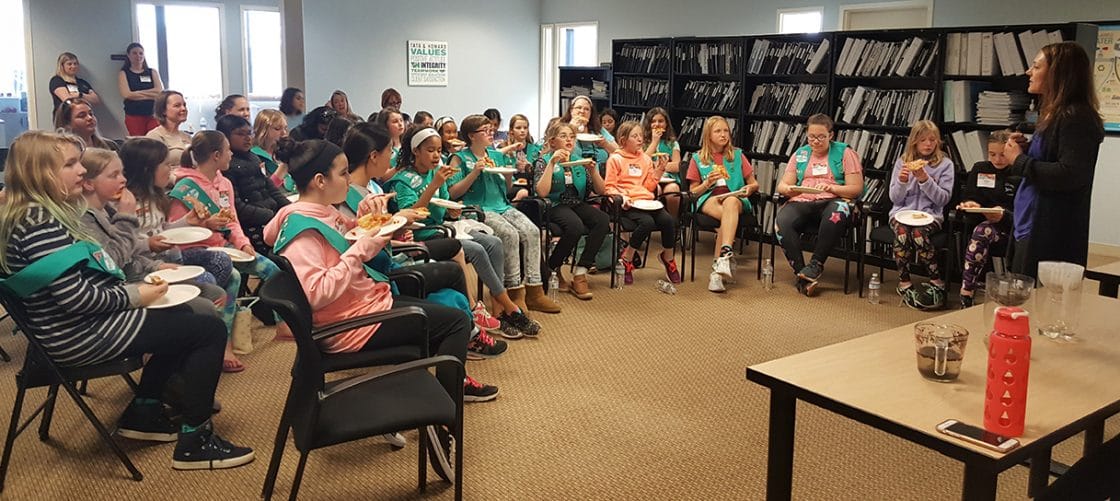

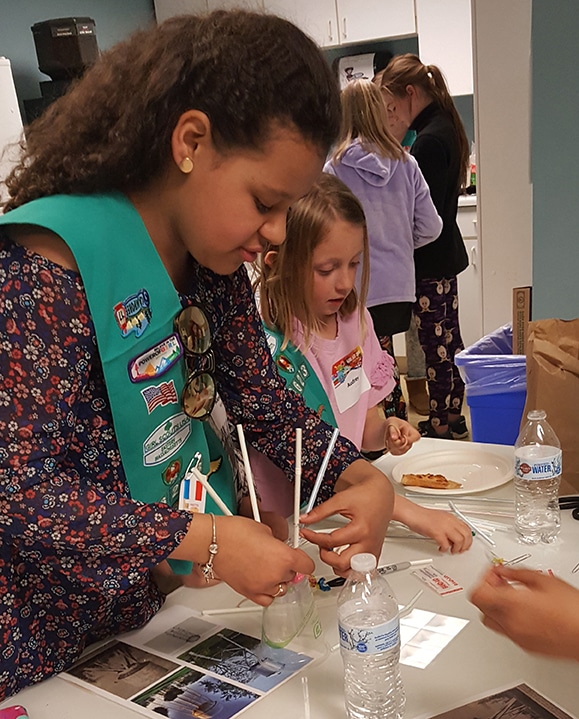
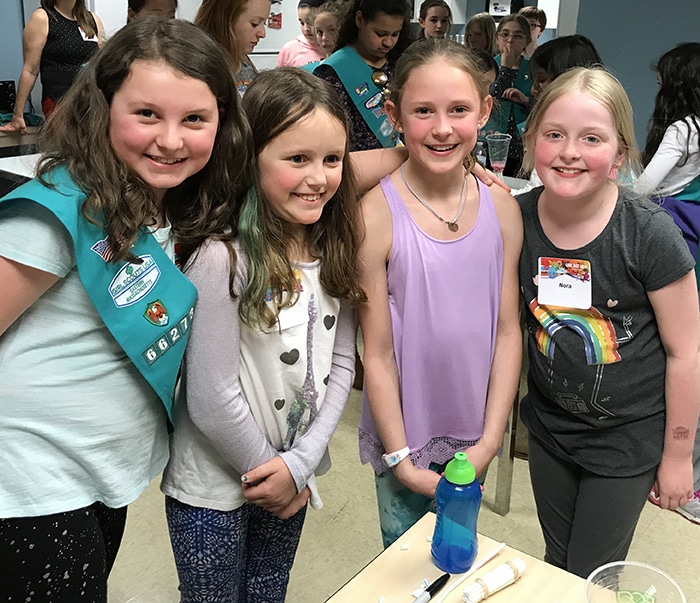

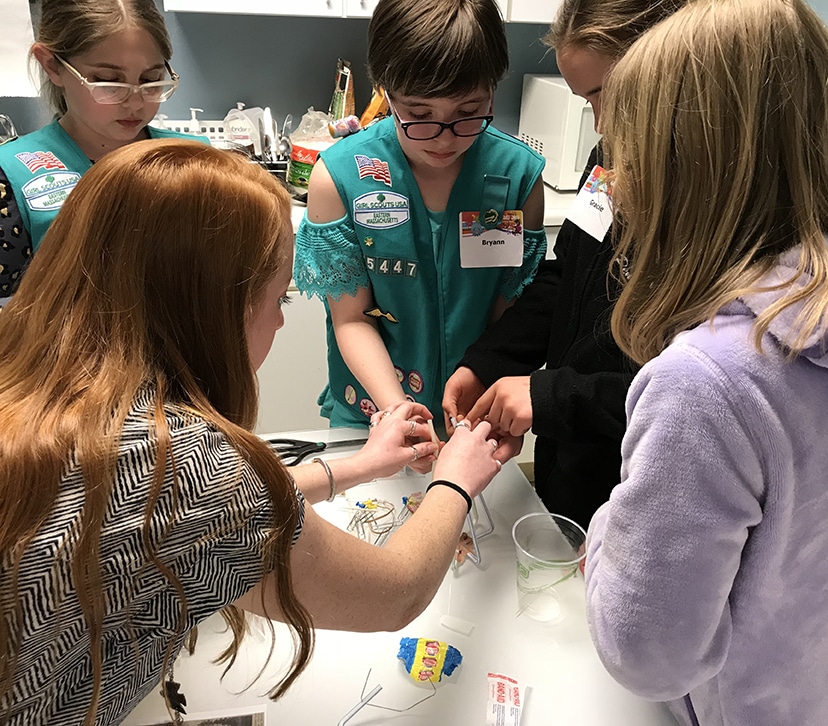
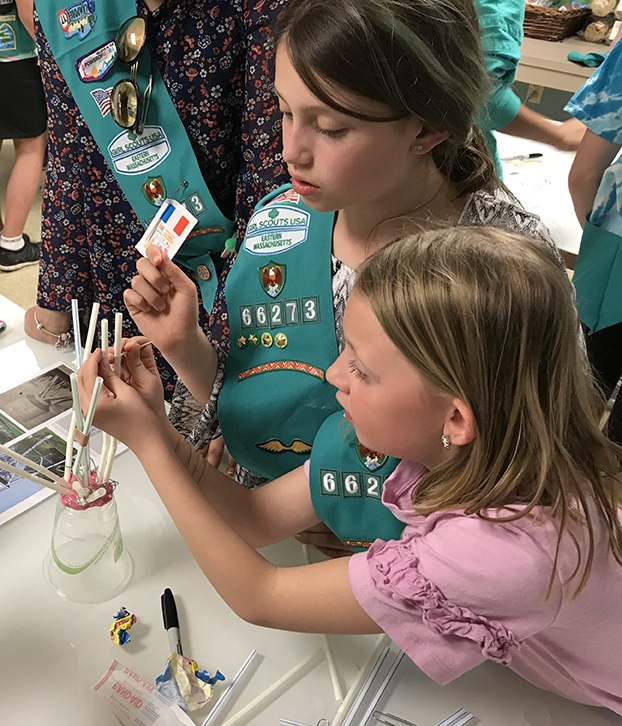
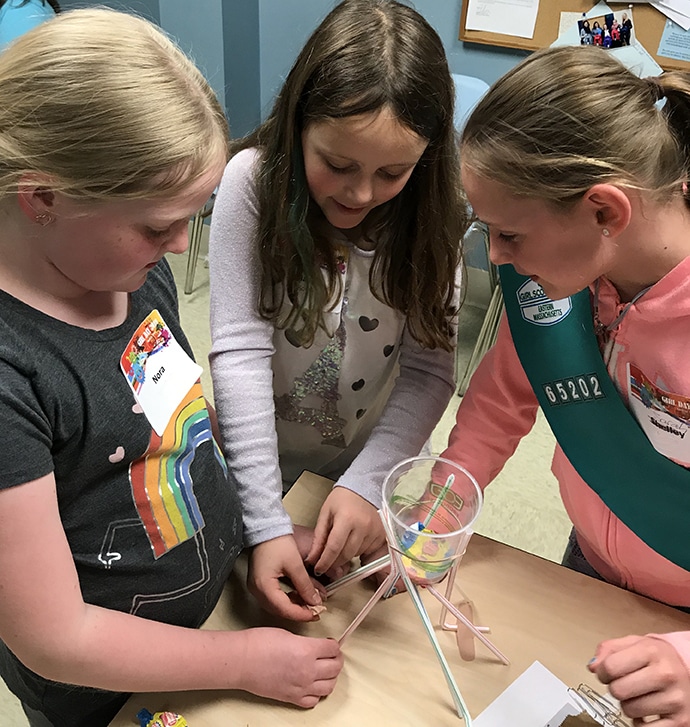


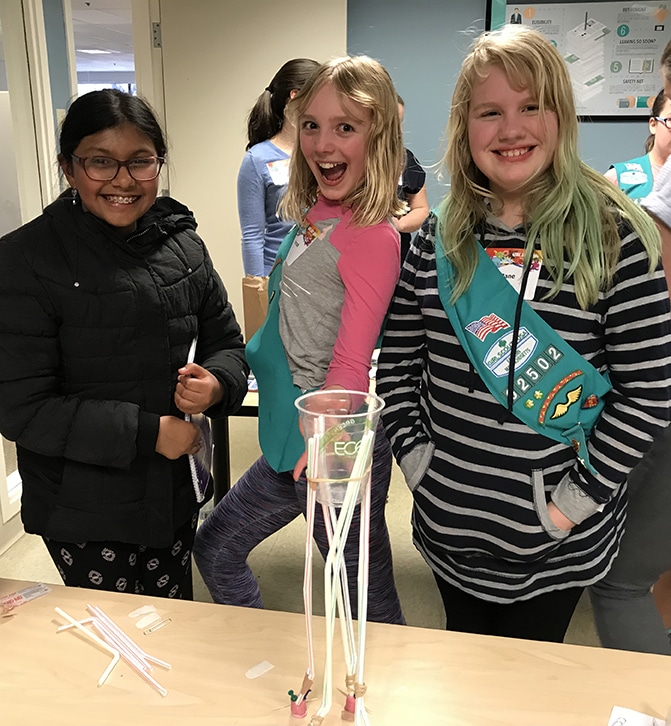

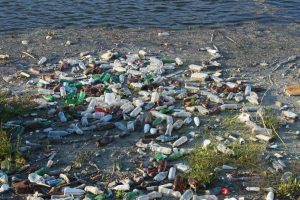 Some of it can be recycled. Quite a bit ends up in the trash and landfills. And more than you can imagine ends up loose as plastic pollution, eventually making its way into our waterways. There are millions of tons of debris floating around in the water—and most of it is plastic. It is estimated that up to 80% of marine trash and plastic actually originates on land—either swept in from the coastline or carried to rivers from the streets during heavy rain via storm drains and sewer overflows.
Some of it can be recycled. Quite a bit ends up in the trash and landfills. And more than you can imagine ends up loose as plastic pollution, eventually making its way into our waterways. There are millions of tons of debris floating around in the water—and most of it is plastic. It is estimated that up to 80% of marine trash and plastic actually originates on land—either swept in from the coastline or carried to rivers from the streets during heavy rain via storm drains and sewer overflows.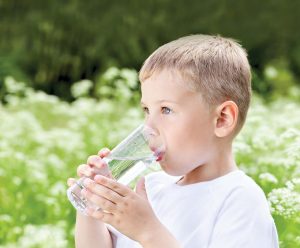 Drink from reusable containers and fill with tap water. Consider that close to 50 billion plastic bottles are tossed in the trash each year and only 23% are recycled!1 If that isn’t’ enough to convince you to stop buying ‘disposable’ water bottles, a recent study by
Drink from reusable containers and fill with tap water. Consider that close to 50 billion plastic bottles are tossed in the trash each year and only 23% are recycled!1 If that isn’t’ enough to convince you to stop buying ‘disposable’ water bottles, a recent study by 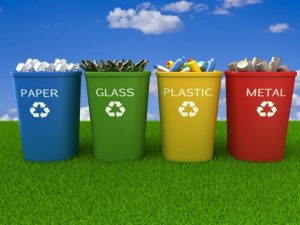

 Not only healthier for you, cooking at home helps reduce the endless surplus of plastic packaging – take out containers, food wrappers, bottles, and eating utensils. Choose fresh fruits and veggies and bulk items with less packaging…and pack your leftovers or lunch in reusable containers and bags.
Not only healthier for you, cooking at home helps reduce the endless surplus of plastic packaging – take out containers, food wrappers, bottles, and eating utensils. Choose fresh fruits and veggies and bulk items with less packaging…and pack your leftovers or lunch in reusable containers and bags.
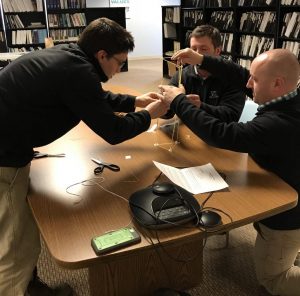
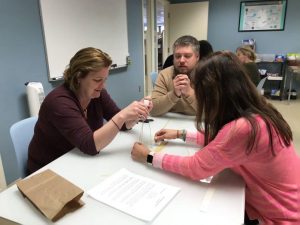


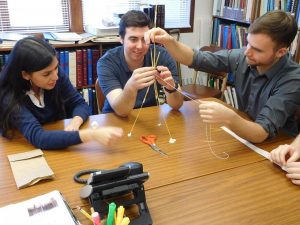
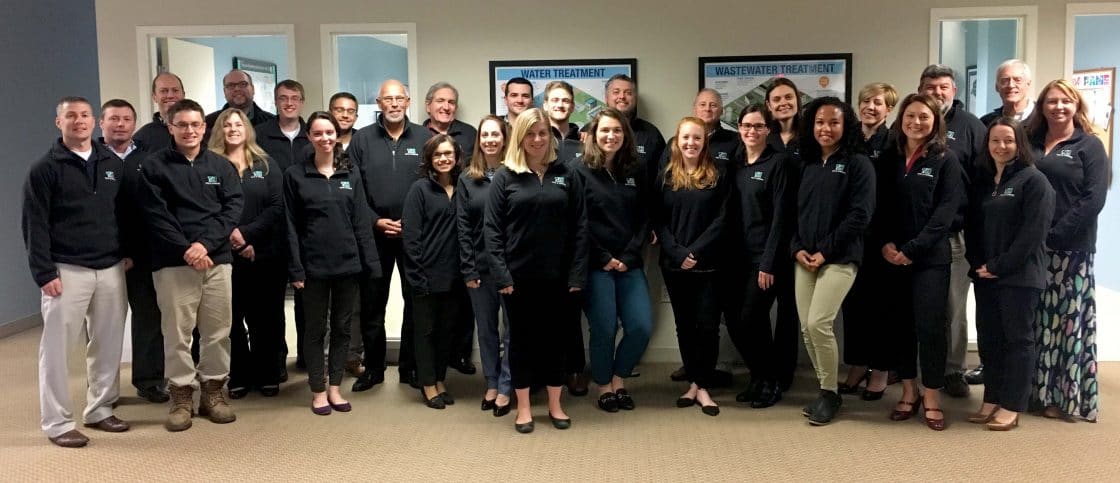 Tata & Howard is a 100% employee-owned company, or ESOP. Being an ESOP is an integral part of our corporate culture, and we consistently strive to enhance our core values of teamwork, innovative solutions, positive attitude, efficiency, and integrity through teambuilding activities throughout the year. October is ESOP Month, celebrated by ESOP companies across the United States, and an excellent time for all of us at Tata & Howard to focus on the benefits of employee-ownership as well as the core values that have been with us since our inception in 1992.
Tata & Howard is a 100% employee-owned company, or ESOP. Being an ESOP is an integral part of our corporate culture, and we consistently strive to enhance our core values of teamwork, innovative solutions, positive attitude, efficiency, and integrity through teambuilding activities throughout the year. October is ESOP Month, celebrated by ESOP companies across the United States, and an excellent time for all of us at Tata & Howard to focus on the benefits of employee-ownership as well as the core values that have been with us since our inception in 1992.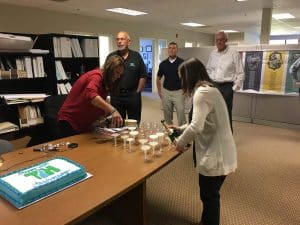


 After completing the scavenger hunt, EOs headed over to the Union Oyster House, the oldest restaurant in the United States, where we enjoyed appetizers and drinks in a private room. Once everyone had arrived, a theater troupe from Monson, MA (one of our clients!) began their performance of Trial & Error, a hilarious interactive show that takes place in a courtroom. Each act was given between courses, and the laughter could be heard throughout the restaurant. At the end of the night, we cut into our special 25th anniversary cake and savored the sweet taste of success. The night was highly enjoyable and a true celebration of our firm’s incredible accomplishments.
After completing the scavenger hunt, EOs headed over to the Union Oyster House, the oldest restaurant in the United States, where we enjoyed appetizers and drinks in a private room. Once everyone had arrived, a theater troupe from Monson, MA (one of our clients!) began their performance of Trial & Error, a hilarious interactive show that takes place in a courtroom. Each act was given between courses, and the laughter could be heard throughout the restaurant. At the end of the night, we cut into our special 25th anniversary cake and savored the sweet taste of success. The night was highly enjoyable and a true celebration of our firm’s incredible accomplishments.
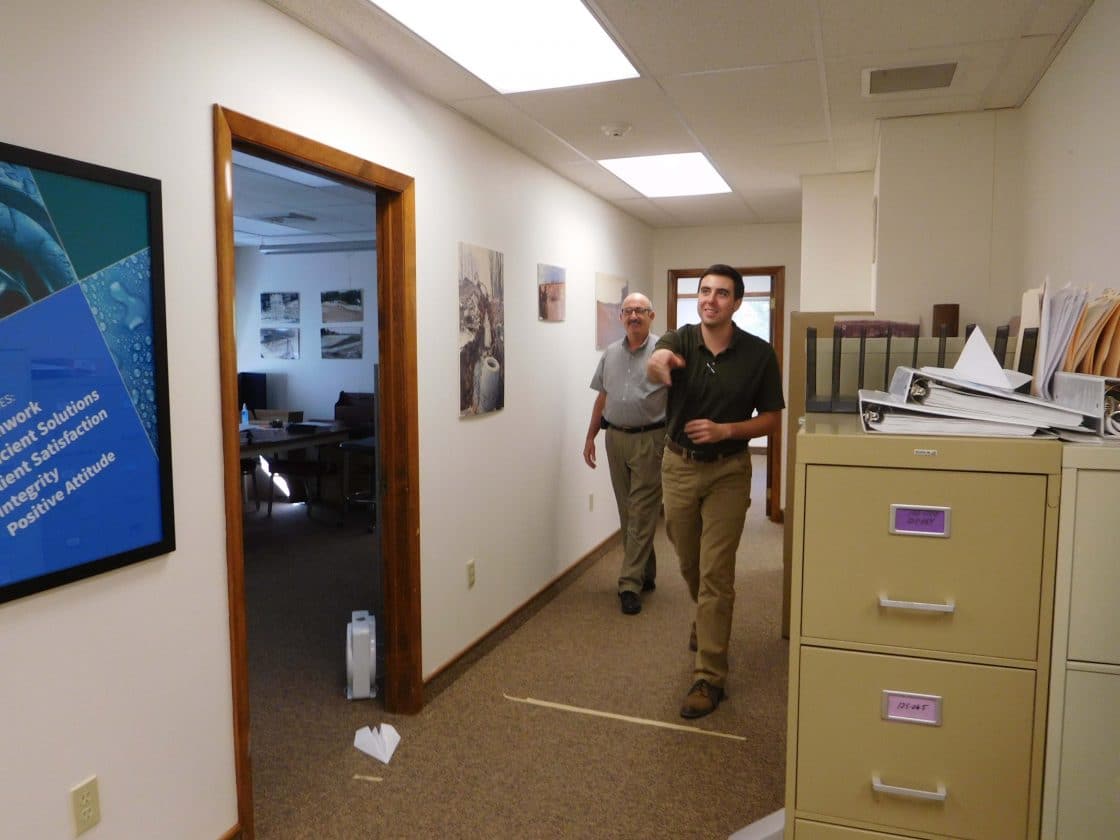
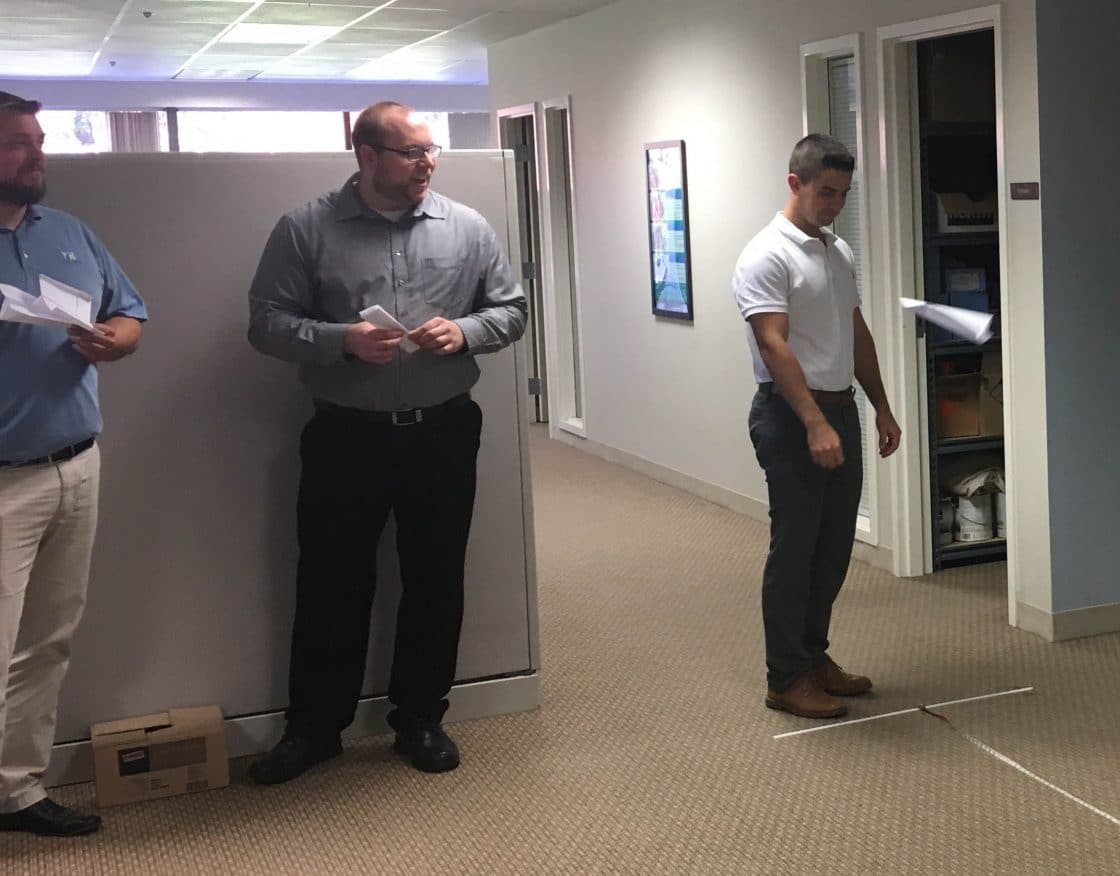
 During the last week of ESOP Month, EOs participated in a step competition, sponsored by our Wellness Committee. The team with the highest total steps as well as the team with the most participation would receive points for their houses. Over half the company participated, and collectively we racked up an astounding 1,754,372 steps! That’s the equivalent of walking from Marlborough, Massachusetts to Cincinnati, Ohio.
During the last week of ESOP Month, EOs participated in a step competition, sponsored by our Wellness Committee. The team with the highest total steps as well as the team with the most participation would receive points for their houses. Over half the company participated, and collectively we racked up an astounding 1,754,372 steps! That’s the equivalent of walking from Marlborough, Massachusetts to Cincinnati, Ohio.

 As a 100% employee-owned company, Tata & Howard has a unique culture that celebrates teamwork, efficiency, integrity, positivity, philanthropy, sustainability, and yes, even fun. ESOP Month is celebrated by ESOP companies throughout the United States in October each year, and it serves as an excellent reminder of the many reasons why being part of an ESOP is such an exciting opportunity. Throughout the month, employee-owners (EOs) participate in challenges, activities, educational sessions, and philanthropic initiatives that embody the essence of ESOP culture and serve to remind EOs of the incredible benefits realized by being part of an ESOP company.
As a 100% employee-owned company, Tata & Howard has a unique culture that celebrates teamwork, efficiency, integrity, positivity, philanthropy, sustainability, and yes, even fun. ESOP Month is celebrated by ESOP companies throughout the United States in October each year, and it serves as an excellent reminder of the many reasons why being part of an ESOP is such an exciting opportunity. Throughout the month, employee-owners (EOs) participate in challenges, activities, educational sessions, and philanthropic initiatives that embody the essence of ESOP culture and serve to remind EOs of the incredible benefits realized by being part of an ESOP company. At Tata & Howard, our four ESOP committees – Communications, Green, Philanthropy, and Wellness – got together to plan a month’s worth of festivities. The month kicked off with cider donuts, cider, and coffee in all offices, after which EOs were sorted into houses, Harry Potter style. EOs will stay in their house for the month and houses will collect points based on participation and success in challenges. The house with the most points at the end of the month is declared the winner and receives the House Cup.
At Tata & Howard, our four ESOP committees – Communications, Green, Philanthropy, and Wellness – got together to plan a month’s worth of festivities. The month kicked off with cider donuts, cider, and coffee in all offices, after which EOs were sorted into houses, Harry Potter style. EOs will stay in their house for the month and houses will collect points based on participation and success in challenges. The house with the most points at the end of the month is declared the winner and receives the House Cup.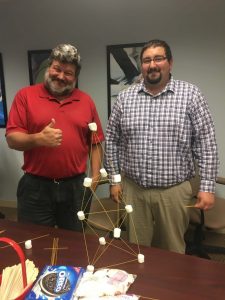
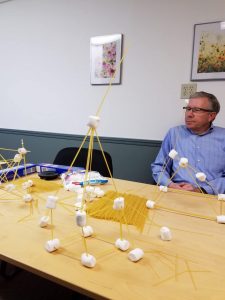 Also during week 1, EOs celebrated National Taco Day, which officially fell on October 4. Some offices had a taco potluck and others grabbed tacos from a local restaurant, but all offices enjoyed National Taco Day and spending some downtime together.
Also during week 1, EOs celebrated National Taco Day, which officially fell on October 4. Some offices had a taco potluck and others grabbed tacos from a local restaurant, but all offices enjoyed National Taco Day and spending some downtime together.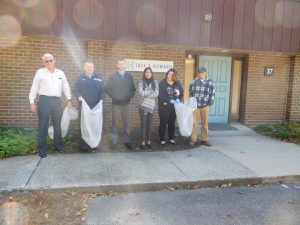 Week 2 brought on a whole new set of challenges. EOs participated in a “Minute to Win It” challenge that included building the tallest possible tower out of spaghetti and marshmallows in five minutes, and three one minute challenges including moving piles of index cards by sucking them up with a straw, moving marshmallows with chopsticks, and eating a cookie from one’s forehead without using hands. Needless to say, laughs abounded and we learned who eats a lot of ramen and who has experience with forehead cookie eating! Points were again awarded for both participation and winning challenges.
Week 2 brought on a whole new set of challenges. EOs participated in a “Minute to Win It” challenge that included building the tallest possible tower out of spaghetti and marshmallows in five minutes, and three one minute challenges including moving piles of index cards by sucking them up with a straw, moving marshmallows with chopsticks, and eating a cookie from one’s forehead without using hands. Needless to say, laughs abounded and we learned who eats a lot of ramen and who has experience with forehead cookie eating! Points were again awarded for both participation and winning challenges.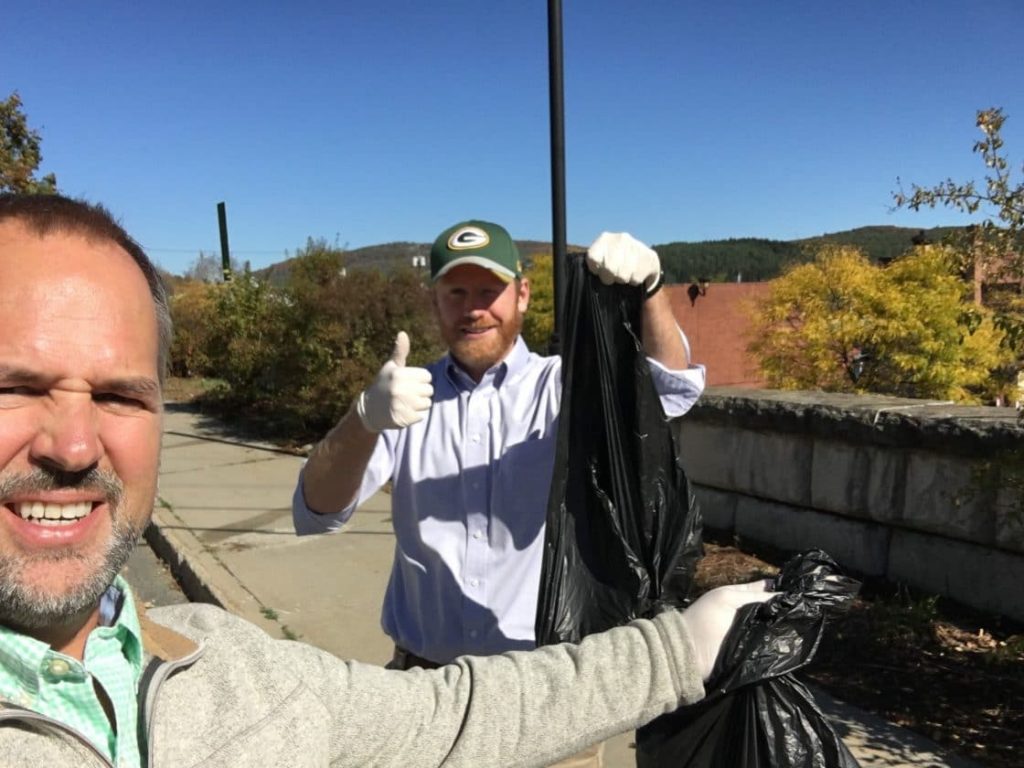
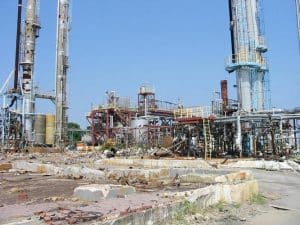


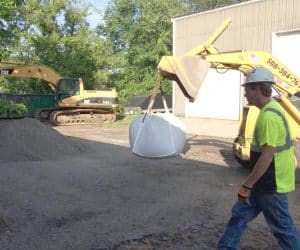
 Municipal water treatment and distribution requires an exorbitant amount of resources, wreaking havoc on the environment and on budgets. And it’s getting worse. Over the past several years, operating costs have consistently been on the rise, while municipal budgets continue to shrink. In addition, regulatory requirements are increasing, forcing municipalities to upgrade treatment processes ahead of schedule. These changes result in limited unsustainable systems and utilities scrambling to find ways to manage their insufficient operational budgets while maintaining levels of service. The good news is that low-cost initiatives exist that can provide quick and significant cost and environmental savings and increase system sustainability.
Municipal water treatment and distribution requires an exorbitant amount of resources, wreaking havoc on the environment and on budgets. And it’s getting worse. Over the past several years, operating costs have consistently been on the rise, while municipal budgets continue to shrink. In addition, regulatory requirements are increasing, forcing municipalities to upgrade treatment processes ahead of schedule. These changes result in limited unsustainable systems and utilities scrambling to find ways to manage their insufficient operational budgets while maintaining levels of service. The good news is that low-cost initiatives exist that can provide quick and significant cost and environmental savings and increase system sustainability.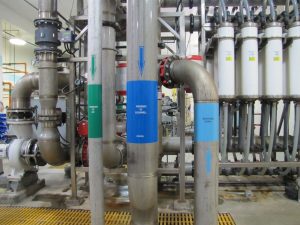

 Efficiency and sustainability are no longer considered luxuries for water systems. Rather, incorporating green initiatives into infrastructure design and operational standards has become crucial to the future sustainability of water systems. And while utilities today value cost-effectiveness over environmentalism due to the criticality of their budgets, there will likely be a shift in thinking as these systems ease the burden of their unsustainable operational costs through effective practices such as efficiency and water loss reduction.
Efficiency and sustainability are no longer considered luxuries for water systems. Rather, incorporating green initiatives into infrastructure design and operational standards has become crucial to the future sustainability of water systems. And while utilities today value cost-effectiveness over environmentalism due to the criticality of their budgets, there will likely be a shift in thinking as these systems ease the burden of their unsustainable operational costs through effective practices such as efficiency and water loss reduction.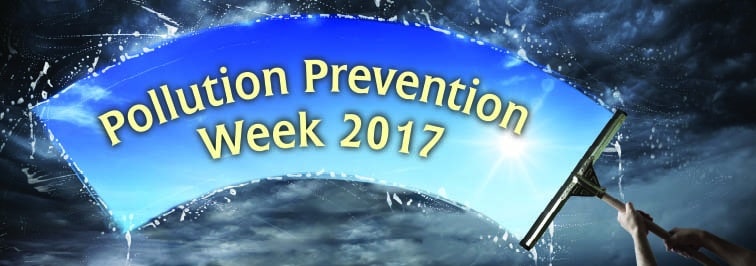 Pollution Prevention Week takes place each year during the third week in September. This special week celebrates the passing of the Pollution Prevention Act in 1990, and serves as an opportunity for businesses, individuals, governments, organizations, and groups to focus on pollution prevention (P2) by celebrating their sustainability achievements, expanding current practices, and implementing new initiatives. In addition, P2 Week serves to remind individuals and organizations of the myriad ways that pollution can be prevented.
Pollution Prevention Week takes place each year during the third week in September. This special week celebrates the passing of the Pollution Prevention Act in 1990, and serves as an opportunity for businesses, individuals, governments, organizations, and groups to focus on pollution prevention (P2) by celebrating their sustainability achievements, expanding current practices, and implementing new initiatives. In addition, P2 Week serves to remind individuals and organizations of the myriad ways that pollution can be prevented.